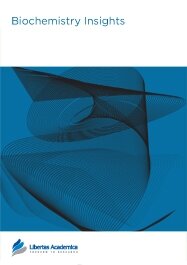

Publication Date: 05 Aug 2009
Type: Original Research
Journal: Biochemistry Insights
Citation: Biochemistry Insights 2009:2 51-62

François Gagné1, M. Laura Martín-Díaz2,3 and Christian Blaise1
1Fluvial Ecosystem Research, Environment Canada, Montréal, Quebec, Canada. 2Cátedra UNESCO/UNITWIN/WiCop, Facultad de Ciencias del Mary Ambientales, Universidad de Cádiz, Puerto Real, Spain. 3Instituto de Ciencias Marinas de Andalucía, CSIC, Puerto Real (Cádiz), Spain.
Abstract
In aquatic environments, genotoxicity results from the effects of pollution combined with the inflammatory response triggered by the immune system. Indeed, the production of nitrosylated DNA and proteins are though to arise from the production of peroxinitrite during phagocytosis and inflammation. The purpose of this study was to examine new DNA biomarkers that differentiate between immune- and pollution-mediated genotoxicity in wild clam populations. Intertidal clam populations were sampled and analyzed for gonadal DNA strand breaks, DNA nitrosylation and xanthine oxidoreductase (XOR) activity (purine salvage pathway). The clam weight-to-shell-length ratio, the gonado-somatic index (GSI), age status, lipid peroxidation, xenobiotic conjugation activity (glutathione S-transferase (GST) and phagocytic activity were examined to shed light on their relationships with the observed genotoxic endpoints. XOR activity and DNA strand breaks were generally elevated at polluted sites and correlated significantly with clam weight-to-shell-length ratios and DNA nitrosylation. DNA nitrosylation was also higher at some sites and correlated significantly with phagocytic activity and with DNA strand breaks. This study showed that DNA strand breaks were associated with both immune- and pollution-mediated effects. This suggests that there is a loss of DNA repair capacity due to the combined effects of aging, pollution and immune response in wild clam populations that are impacted by anthropogenic activity.
PDF (2.31 MB PDF FORMAT)
RIS citation (ENDNOTE, REFERENCE MANAGER, PROCITE, REFWORKS)
BibTex citation (BIBDESK, LATEX)

My co-authors and I had a very positive experience with the review and publication process in Evolutionary Bioinformatics. The reviewers were rapid and on point, and publication was also rapid after we made the necessary revisions.
Facebook Google+ Twitter
Pinterest Tumblr YouTube